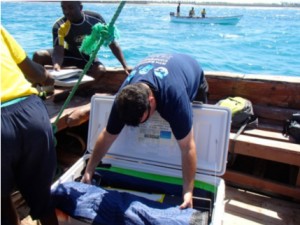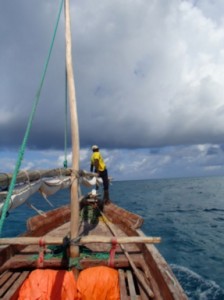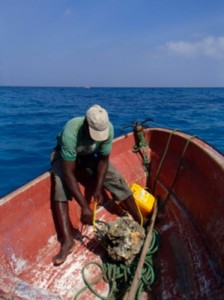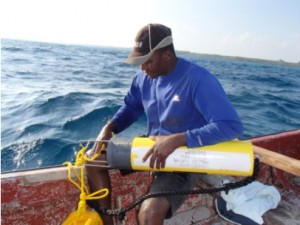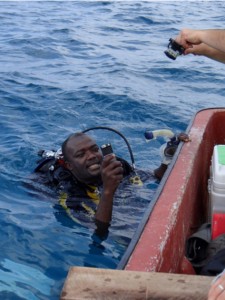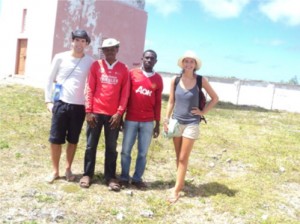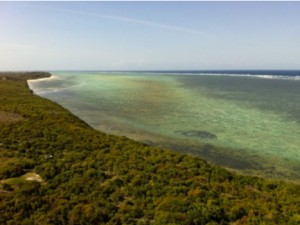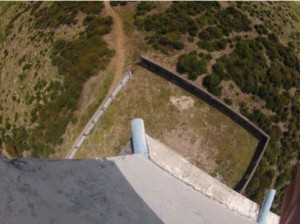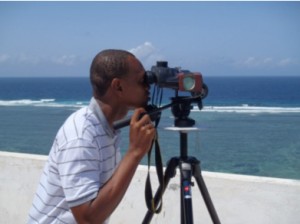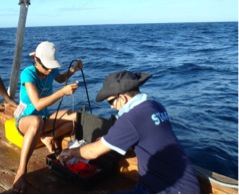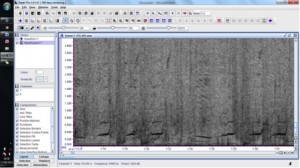Zanzibar Humpback Whale Research Project 2012
Blog 10: Hydro Buoy, 04/08/2012
Although the lighthouse pilot study is completed we are still very busy especially now that Jake Levenson from our funding agency the International Fund for Animal Welfare (IFAW) has arrived. The team is excited, not only to enjoy Jake’s company, but also because he brought with him an additional tool for the humpback whale research – a recording hydrophone buoy (underwater microphone). The hydrophone will be used for nearly continuous acoustic recordings of all underwater sounds including dolphins, whales, vessel activities and any other sounds occurring in the waters in our study area off southern Zanzibar.
Jake Levenson preparing the hydrophone buoy for deployment.
The hydrophone buoy will remain deployed for the rest of the 2012 season and, once retrieved, will provide the project with additional data on the day-and-night acoustic presence of humpback whales and other underwater sounds. It was an interesting process deploying the hydrophone buoy; we had to decide on a location, to minimise noise from reefs (reefs are noisy places!) and the coastline, where waves crash onto shore. In the end, the hydrophone buoy was deployed in an area commonly used by Indo-Pacific bottlenose dolphins (Tursiops aduncus) and Indo-Pacific humpback dolphins (Sousa chinensis) and also where we previously have recorded humpback whale song. Humpback whales sing on the breeding and mating grounds and it is believed the males do this either to attract females or to express their breeding fitness to other males. With these recordings, in addition to data we collect during boat-based hydrophone recordings, the project will be able to compare humpback whale songs throughout the season and between seasons.
Captain Foum on our survey vessel on the way to deploy the hydrophone bouy.
The buoy was anchored to the seafloor at a depth of 13 m and will remain there for approximately 6 weeks until the end of the season. Prior to deployment a sampling rate (times throughout the day it will record acoustic data) was chosen to ensure battery life across the full extent of the deployment period – you would not want to discover that the batteries died halfway through the deployment.
Foum preparing the ‘anchor’ which will be used to hold the hydrophone buoy in place.
Abas, a local friend & divemaster, who dove with Jake to deploy the hydrophone
Khamis, our local captain, with the hydrophone buoy.
Abas post-dive: texting while diving?
Many thanks to Jake for bringing the exciting new piece of equipment to the Zanzibar Humpback Whale Project; the data collected from the hydrophone buoy will help us assess the occurrence and singing behaviour of the whales and other noise including vessel traffic, offshore oil and gas activities, dynamite fishing and other human or natural sounds off southern Zanzibar.
Pictures © Zanzibar Humpback Whale Project

